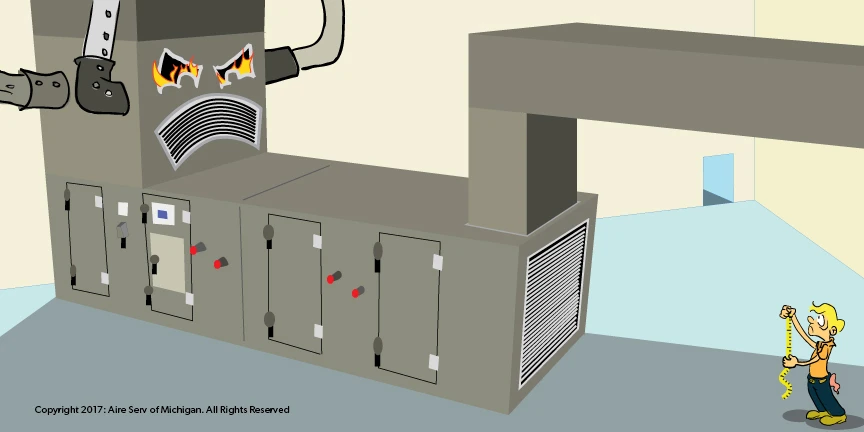High-efficiency alternative to standard rooftop HVAC systems

This technology has the potential to achieve 34 percent energy savings compared to older systems.
Variable Refrigerant Flow (VRF) systems use refrigerant for both heating and cooling. The refrigerant is conditioned and circulated within the building to multiple output devices - typically fan-coil units.
The refrigerant is delivered to each fan-coil unit via piping, eliminating standard air ducts. While fresh air must still be delivered, the ducts can be much smaller. This saves space floor-floor in multi-story buildings, is much quieter and is a great alternative for older buildings. Mechanical equipment such as air handlers is also eliminated, freeing up valuable additional floor space.
According to the US government’s GSA, Variable Refrigerant Flow is an HVAC technology that can simultaneously heat and cool different spaces in a facility and allow for greater temperature control while conserving energy. The system itself is more efficient than standard zone systems, with additional savings due to temperature control for individual spaces.
Potential savings certainly don’t apply in all applications. However, buildings with the following characteristics are excellent candidates for VRF applications:
• buildings with boiler heat. Typically there are no ducts existing and retrofitting a standard zone system is out of the question.
• older and historical buildings (listed or eligible for listing in the National Register of Historic Places), with limited room to install or change systems and restrictions on building modifications.
• buildings with a significant change of use – office, churches, schools, hospitals and health clinics.
• new building projects that can take advantage of opportunities to reduce floor-to-floor height, or increase usable floor space by removing mechanical equipment from inside the main building areas.
• significant heating requirements – the Midwest and Northeast are good places to look for opportunities in this regard.
• inefficient HVAC systems and high energy costs due to inefficient fan systems and/or leaky or poorly designed or installed ductwork.
• lack of cooling or inadequate cooling capacity (although adding cooling capability or capacity may increase total energy usage despite possible reductions in fan and heating energy usage)
• already identified for HVAC upgrades, replacements, or energy improvements.
 Click to call
Click to call


